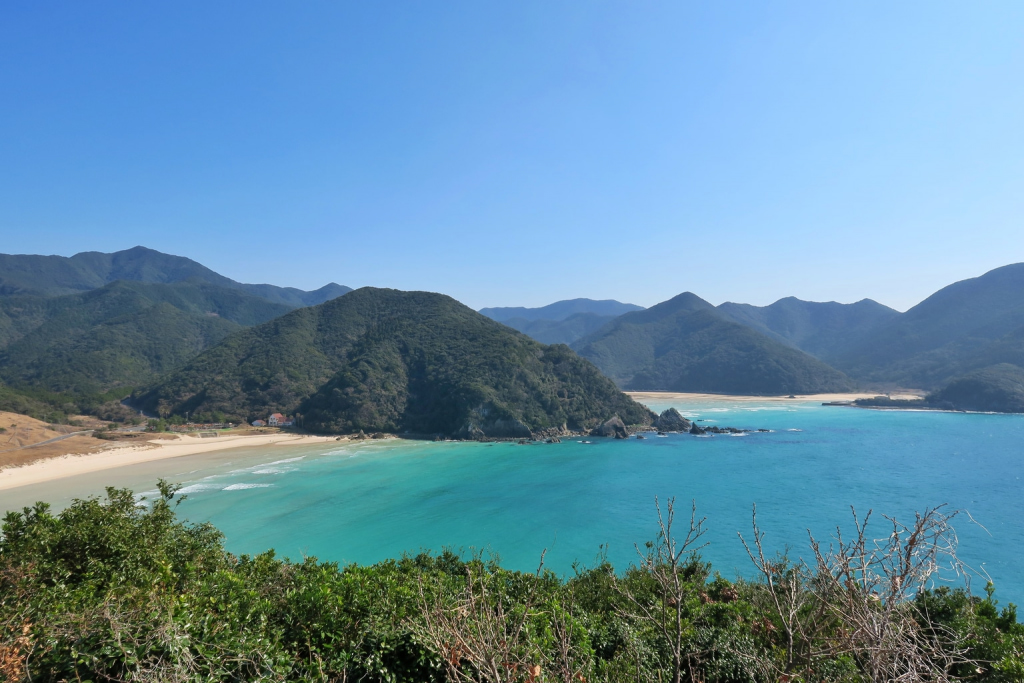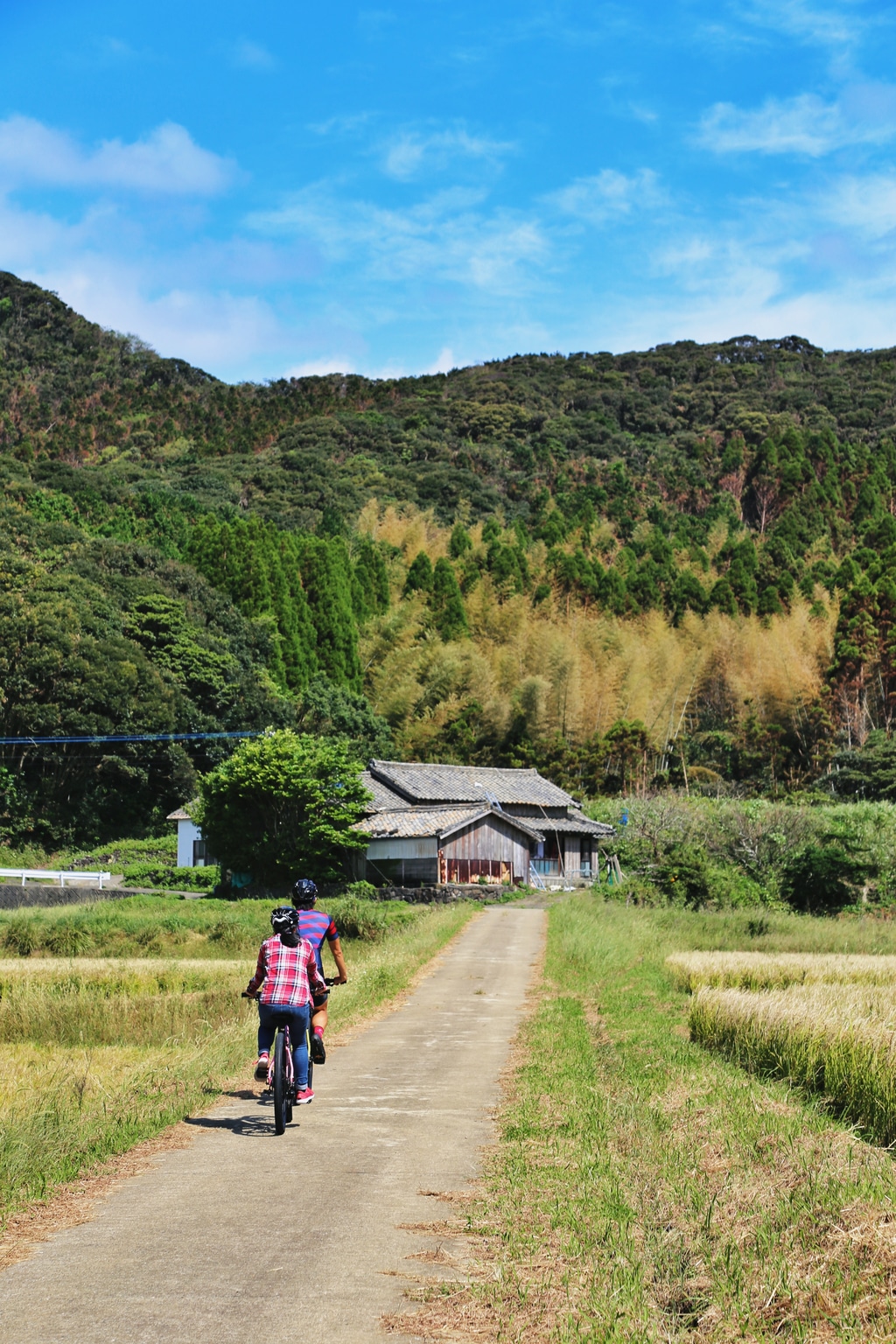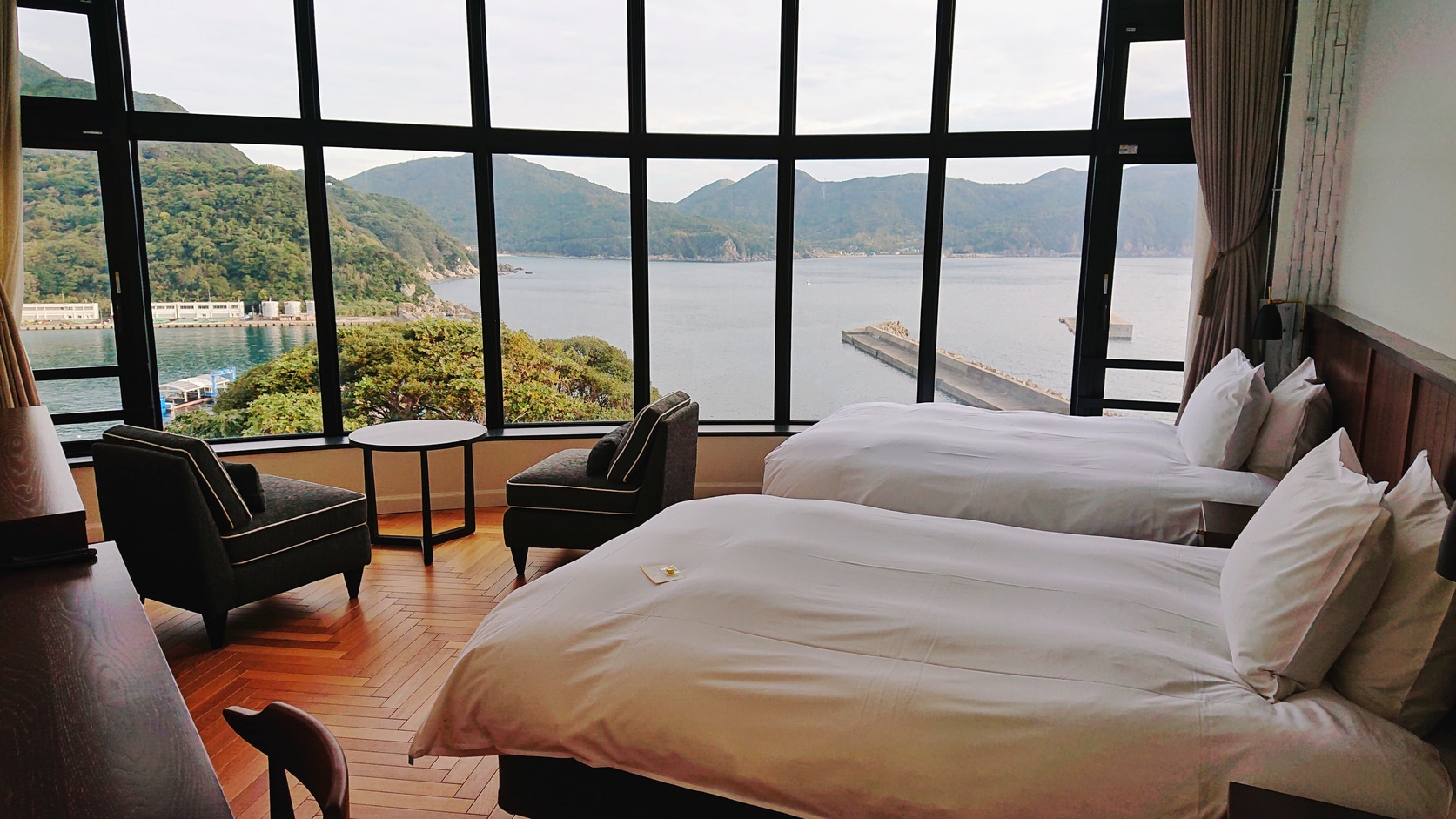Asylum appears again and again in the history of the Goto Islands. Around 400 years ago, with the persecution of Christianity by the Shogunate, a number of Japanese Catholics fled to the Goto Islands to keep practicing in secret. If you go there today, you will see churches dotting the islands. Next to the sea, or sitting on the side of a mountain, they have the mysterious beauty of a secluded abbey.
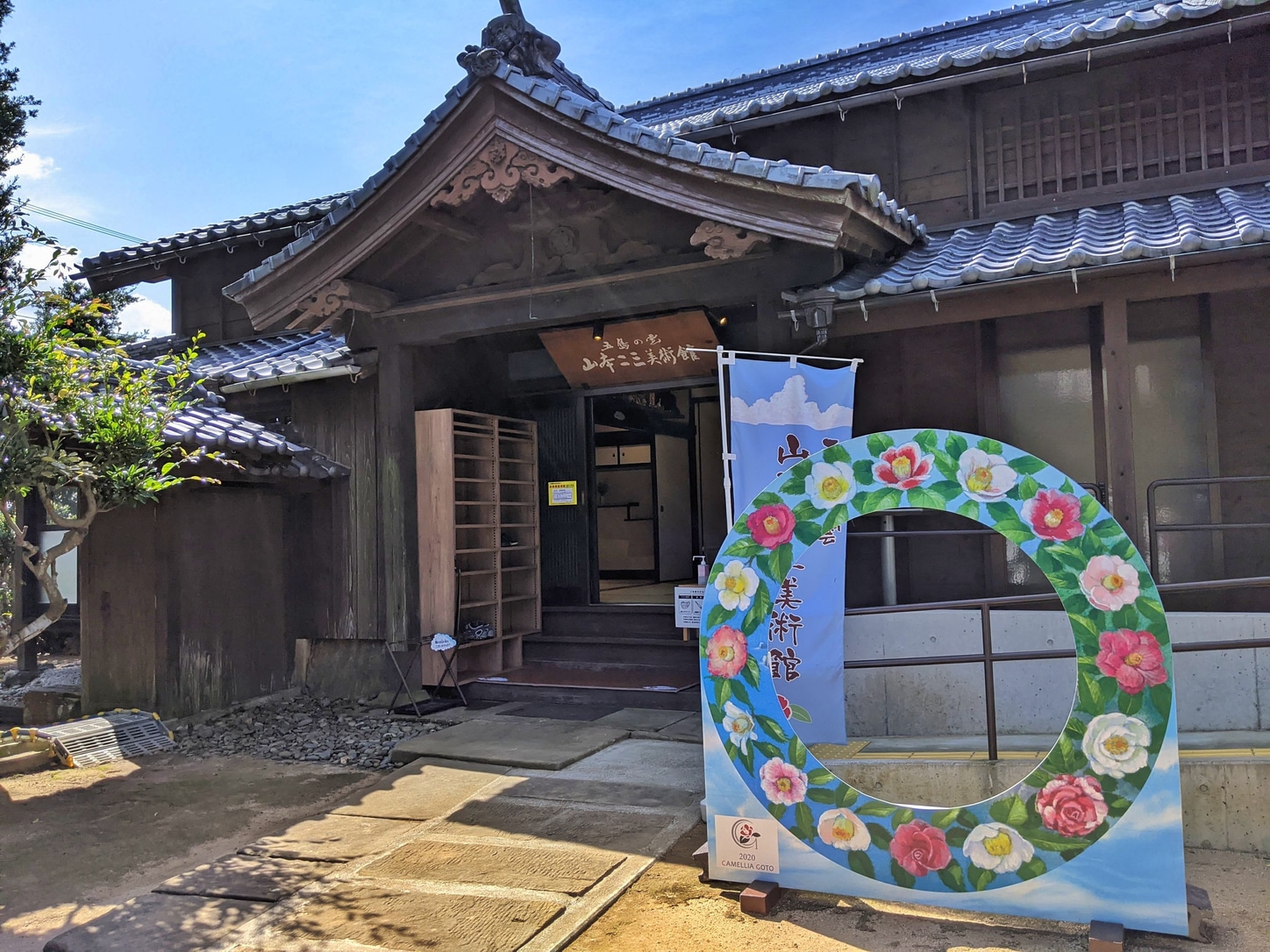
You will also find craggy coastlines, crystalline waters, sharp mountain peaks and Buddhist and feudal monuments to make for some truly unique scenery. We can’t help but suspect that the Goto Islands’ mixed terrain, fishing villages and Western architecture inspired the work of Nizo Yamamoto, the art director and background illustrator behind Ghibli films such as Castle in the Sky, Princess Mononoke and Grave of the Fireflies, as well as animation feats Perfect Blue and Weathering With You. More recently he has undertaken landscapes of his native Goto. In the Samurai District of Fukue Island– where the warrior caste lived in the Edo Period – is the Nizo Yamamoto Museum, a mere 10-minute walk from Fukue Port.
If you like the Ghibli Museum in Mitaka, you’re sure to love this one. Situated in a former bukeyashiki, or samurai mansion, the original architecture is arranged to display the beauties of Yamamoto’s natural world. Some highlights: paintings hung on folding panels, to match the aged atmosphere; the “Sky and Clouds Room,” a floor-to-ceiling installation featuring the artist’s unmistakable blue sky; a reproduction of his studio, with significantly less cigarette butts than Miyazaki’s workspace. Major displays have English translations, and there are museum pamphlets in English.
Sustainable Sightseeing on the Islands
To witness firsthand the islands’ natural wonders, there are several eco-friendly ways to travel around: Travel agency wondertrunk&co offers guided cycling tours of Fukue Island and the small port town of Tomie, as well as electric car rentals (there are plenty of charging stations throughout Fukue). Not to mention a bakery in Tomie with hard breads, croissants, croque monsieur – perfect for a bite post-bike ride. Both the Fukue and Tomie courses are marked by their stunning nature views, though the former, which takes you through the Samurai District, may be more suited to history buffs. Those set on maritime sightseeing may want to ride through Tomie, an area unsullied by modern structures. William, the cycling tour guide, is sure to show you some hidden gems unfamiliar even to the locals. He can also adjust the course based on your stamina, cycling level and sightseeing interests.
With a subtropical climate, the Goto Islands are perfect for such outdoor activities. Residents would agree that the best way to experience the islands is through their natural features – one of the most prominent sights being the white sand beaches and their unbelievably clear, turquoise waters. While kayaking and snorkeling are always options, SUP (stand-up paddleboarding) is a particularly thrilling experience, especially with Kojushi Beach, on the east coast, and the surrounding rugged terrain splayed out before you, the water so clear that you can see your shadow below. These kayaking, snorkeling and SUP tours provided by Goto International House are available in multiple languages.
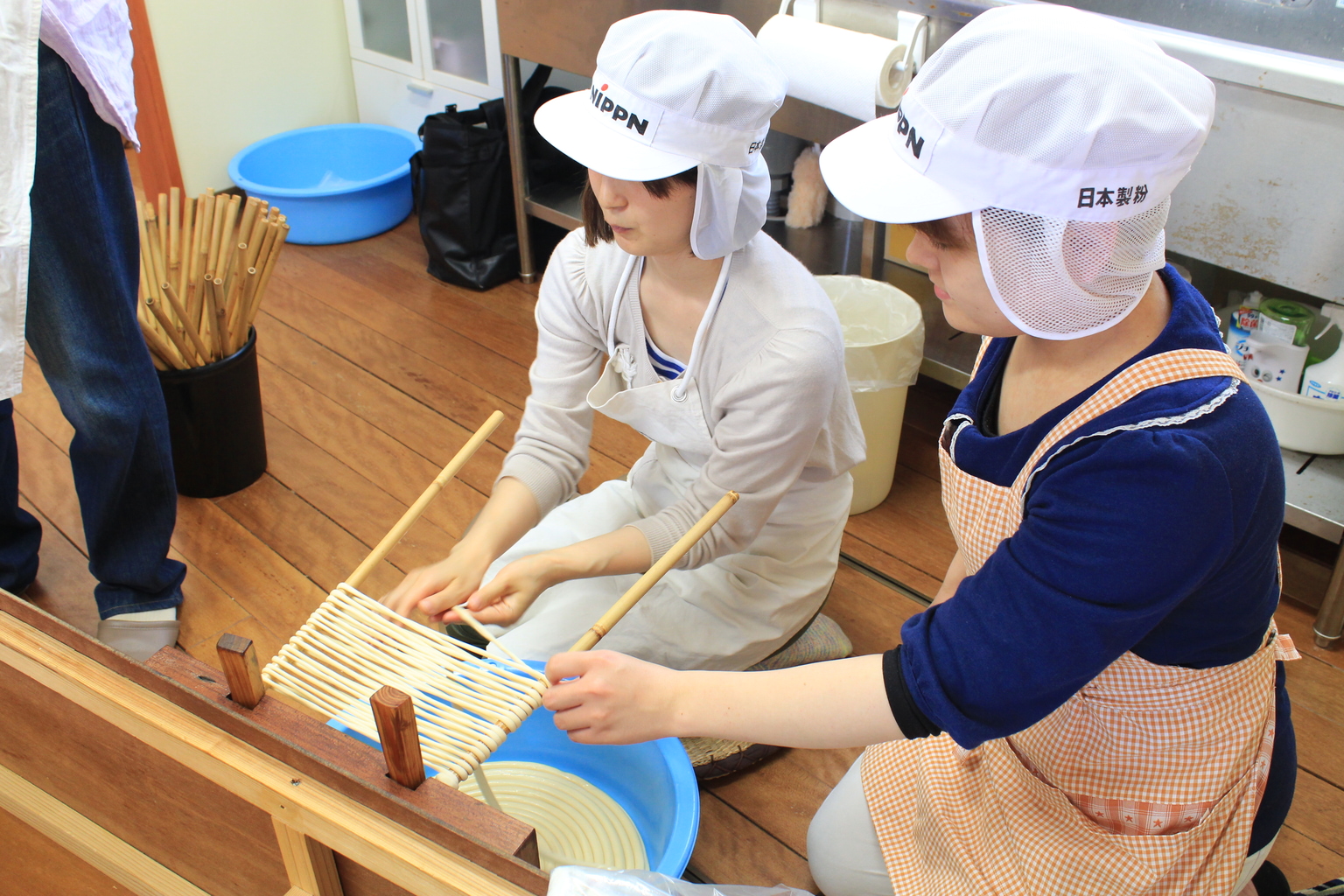
Local Specialties
Northern Goto, known as Shin-Kamigoto, is the less populated sector of the islands. With few streetlights, it’s a fantastic spot for stargazing. Similar to Fukue, it also bears a rich history. One unusual feature: There are Catholic buildings scattered throughout the island alongside Shinto structures like Kaido Shrine. The monument is known for its massive gate made from the jawbone of a whale, symbolizing the area’s success as a whaling town in the past. Until 2002, it was located on the small island of Okojima; the Arikawa Port Terminal would connect this land to the larger town, and now the Kaido Shrine is easily accessible by foot from the Arikawa Port Terminal.
Of course, a region is just not complete without its meibutsu (local specialties). The Goto Islands are home to one of the top three udon variations in Japan. Goto udon is only made locally, infused with camellia oil (a famous island export; wild camellias grow everywhere). The noodles are said to have been introduced by Chinese tradesmen long ago. At the Funasaki Udon Establishment, you can make your own udon using a traditional hand-pulling method. You will shape the noodles, stretch them thin and lay them on a rack for drying, which makes for a springy texture when freshly boiled. (The udon can be delivered to your home at a later date.)
Views of Splendor
On the islands, you never sacrifice beautiful prospects, even when you clock out. The newer Narao branch of Goto Resort Hotel Margherita is located right next to the beach; some guest rooms have huge bedside windows with prime ocean views, while others seem to be nestled in the mountains. Guests can choose from a number of course meals featuring island specialties like sashimi and Goto udon.
The islands’ one-of-a-kind geography not only makes for wonderful walks, drives and rides (and swims perhaps), but it is also reason for the rich architectural and culinary culture. Simply being on the water, gazing at a mountain or walking around a church or shrine is enough to feel like you are part of it.
Sponsored Post

